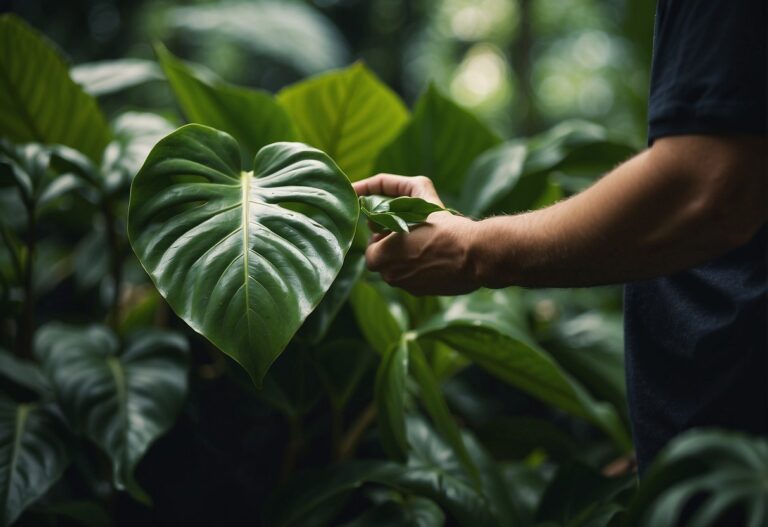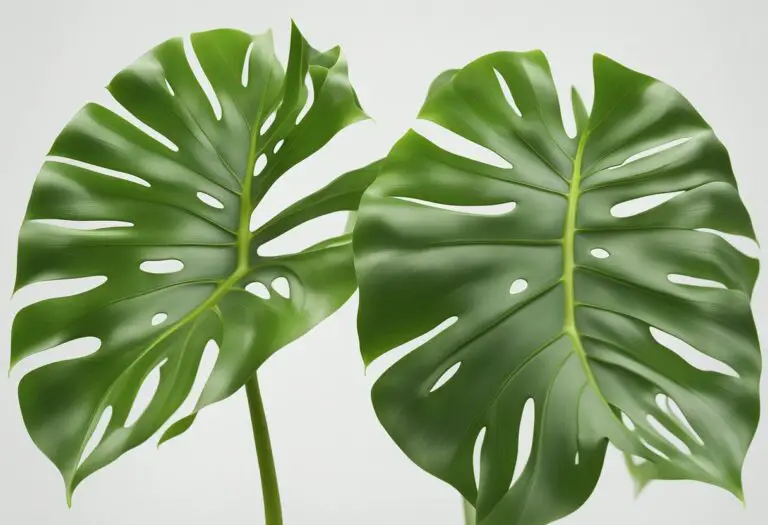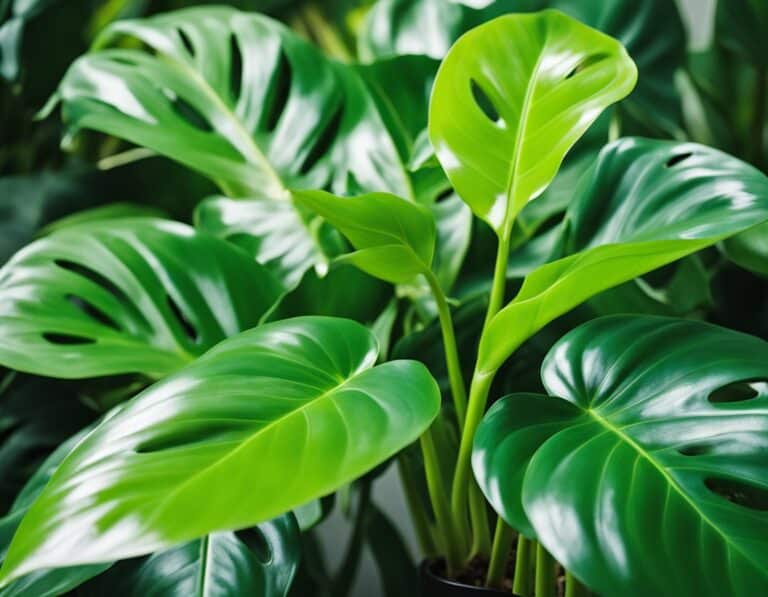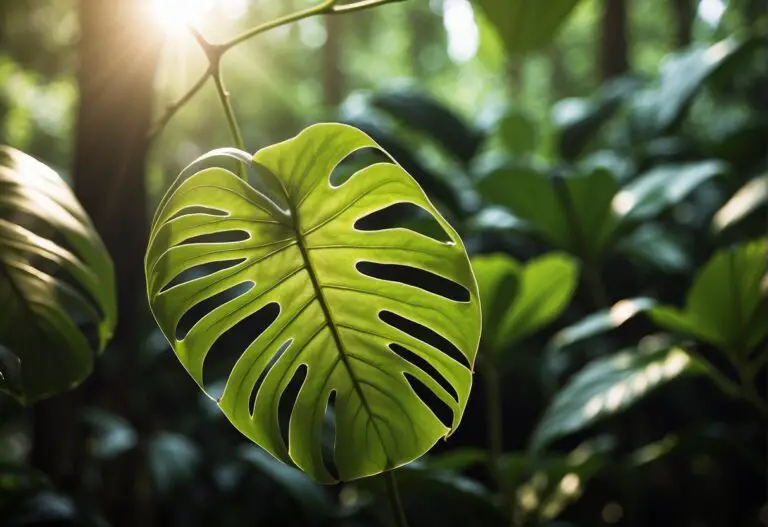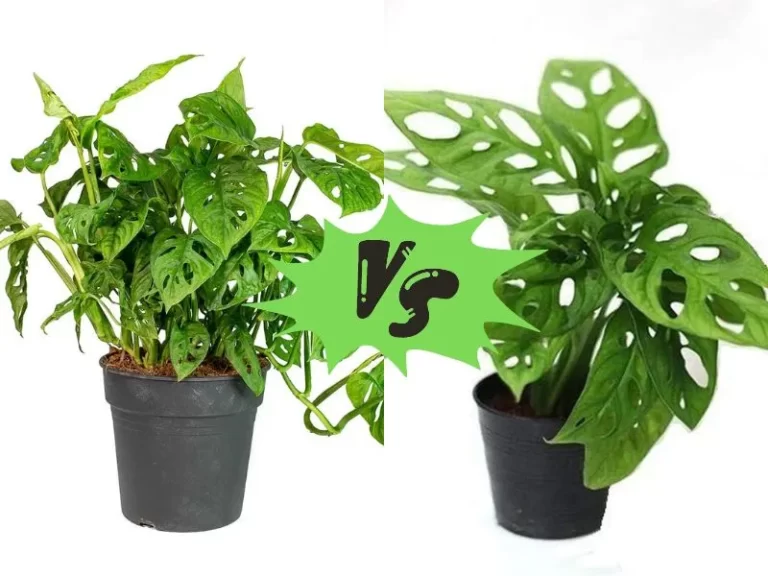Philodendron Pests and Diseases in 2024: Should You Worry?
As a philodendron owner, it’s crucial to be vigilant about pests and diseases in 2024. While philodendrons are generally easy to care for, they remain susceptible to various threats that can harm their health and appearance.

Identifying common pests like spider mites, mealybugs, and thrips, along with diseases such as leaf spot and root rot, is essential. Recognizing the signs early enables you to take prompt action, preventing the spread of issues and minimizing damage to your plant.
Key Takeaways
- Philodendrons are susceptible to a variety of pests and diseases that can negatively impact their growth and appearance.
- Common pests in 2024 include spider mites, mealybugs, and thrips, while common diseases include leaf spot and root rot.
- By learning to identify the signs and symptoms of these pests and diseases, you can take action to prevent them from spreading and causing further damage to your plant.
Understanding Philodendron Pests and Diseases

Philodendrons are popular houseplants known for their beautiful foliage and easy-to-care nature. However, like any other plant, they can be susceptible to pests and diseases.
In this section, you will learn about the common pests and diseases that can affect your Philodendron plants and how to identify and treat them.
Common Pests
Pests can cause serious damage to your Philodendron plants if left untreated. Here are some common pests that can infest your Philodendron plants:
- Spider mites: These tiny pests can cause damage to your plant by sucking out the sap from the leaves, resulting in yellowing and wilting. They are hard to spot with the naked eye, but you can identify them by the fine webbing they leave behind.
- Mealybugs: These pests are small, white, and fluffy and can be found on the undersides of leaves. They can cause damage to your plant by sucking out the sap from the leaves, resulting in stunted growth and yellowing.
- Scale insects: These pests are hard and flat and can be found on the stems and leaves of your plant. They can cause damage to your plant by sucking out the sap from the leaves, resulting in yellowing and wilting.
Common Diseases
Diseases can also affect your Philodendron plants, causing them to wilt, yellow, or die. Here are some common diseases that can affect your Philodendron plants:
- Bacterial leaf spot: This disease can cause translucent spots on the leaves, which later turn reddish-brown with yellow halos. Large spots are tan and irregularly shaped. It is caused by the Xanthomonas campestris pv. dieffenbachiae bacteria.
- Root rot: This disease can cause the roots of your plant to rot, resulting in yellowing and wilting of leaves. It is caused by overwatering and poor drainage.
To prevent pests and diseases from affecting your Philodendron plants, make sure to provide them with proper care, including adequate watering, good drainage, and regular fertilization.
If you notice any signs of pests or diseases, take immediate action to prevent their spread. You can use natural remedies or chemical treatments to get rid of pests and diseases, but make sure to follow the instructions carefully and use them in moderation.
Common Philodendron Pests in 2024

If you’re a proud owner of a Philodendron plant, you may be concerned about pests and diseases that could harm your plant. Although Philodendrons are generally resilient plants, they can be susceptible to common plant-feeding insects such as aphids, mealybugs, spider mites, and thrips.
Aphids
Aphids are small, soft-bodied insects that suck the sap out of the leaves and stems of plants, causing them to wilt and turn yellow.
They are usually found on the undersides of leaves and can be identified by their pear-shaped bodies and long antennae. You can control aphids by spraying the plant with a mixture of water and dish soap or by introducing natural predators like ladybugs.
Mealybugs
Mealybugs are small, white, cottony insects that feed on the sap of plants. They can be found on the undersides of leaves, in leaf axils, and on stems. Mealybugs can cause stunted growth, yellowing leaves, and leaf drop.
You can control mealybugs by wiping them off with a cotton swab dipped in rubbing alcohol or by introducing natural predators like ladybugs.
Spider Mites
Spider mites are tiny, eight-legged pests that are difficult to see with the naked eye. They suck the sap out of the leaves, causing them to turn yellow and dry out.
You can identify spider mites by their webbing, which can be found on the undersides of leaves. You can control spider mites by spraying the plant with a mixture of water and dish soap or by introducing natural predators like ladybugs.
Thrips
Thrips are small, slender insects that feed on the sap of plants. They can be identified by their fringed wings and long, narrow bodies. Thrips can cause distorted growth, silvering of leaves, and black fecal spots.
You can control thrips by spraying the plant with a mixture of water and dish soap or by introducing natural predators like predatory mites.
Remember to regularly inspect your Philodendron plant for any signs of pests or diseases and take action immediately to prevent further damage. With proper care and attention, your Philodendron can thrive and be a beautiful addition to your home or office.
Typical Philodendron Diseases
If you’re a philodendron owner, it’s important to be aware of the typical diseases that your plant may encounter. Here are some of the most common philodendron diseases and how to identify them:
Root Rot
Root rot is a common disease that affects philodendron plants. It occurs when the soil is kept too wet, causing the roots to rot. You can identify root rot by checking the roots of your plant.
Healthy roots should be white and firm, while roots affected by root rot will be brown and mushy. If your plant has root rot, you should remove it from its pot, trim away any affected roots, and repot it in fresh soil.
Leaf Spot
Leaf spot is another common disease that affects philodendron plants. It is caused by a fungus and can be identified by the appearance of small, dark spots on the leaves.
As the disease progresses, the spots may grow larger and turn yellow or brown. To prevent leaf spot, make sure your plant is not overwatered and avoid getting water on the leaves when you water it.
Bacterial Blight
Bacterial blight is a disease that can affect philodendron plants, causing the leaves to turn brown and wilt. It is caused by a bacteria and can be spread through contaminated soil or water.
To prevent bacterial blight, make sure your plant is not overwatered and avoid getting water on the leaves when you water it. If your plant has bacterial blight, you should remove any affected leaves and treat the plant with a fungicide.
Remember, prevention is key when it comes to philodendron diseases. Make sure your plant is getting the right amount of water and sunlight, and keep an eye out for any signs of disease. By taking good care of your philodendron, you can help it stay healthy and vibrant for years to come.
Preventive Measures for Healthy Philodendrons
Philodendrons are beautiful and low-maintenance plants, but they are not immune to pests and diseases. To keep your Philodendrons healthy, you should take some preventive measures. Here are some tips to help you keep your plants in good condition.
Proper Watering Techniques
Overwatering is one of the most common reasons why Philodendrons get sick. Make sure to water your plants only when the top inch of soil is dry.
You should also use a pot with good drainage to prevent water from accumulating in the bottom of the pot. Watering your Philodendrons in the morning is also a good idea, as it gives the leaves time to dry before the night.
Adequate Air Circulation
Philodendrons need good air circulation to prevent fungal diseases. You should keep your plants away from drafts and make sure they are not crowded.
If you have multiple plants in one room, make sure there is enough space between them. You can also use a fan to improve air circulation.
Regular Cleaning and Maintenance
Dust and debris can accumulate on the leaves of Philodendrons, which can attract pests and block sunlight. You should clean the leaves of your plants regularly using a damp cloth.
You can also remove dead leaves and stems to prevent the spread of diseases. Additionally, you should inspect your plants regularly for signs of pests or diseases. If you notice anything unusual, take action immediately.
By following these preventive measures, you can keep your Philodendrons healthy and beautiful. Remember that prevention is always better than cure, so it’s important to take care of your plants before they get sick.
Treatment Strategies for Infected Philodendrons
If you notice that your Philodendron is infected with pests or diseases, there are several treatment strategies you can use to save your plant. In this section, we’ll discuss some natural remedies, chemical treatments, and professional care options that you can consider.
Natural Remedies
If you prefer to use natural remedies to treat your infected Philodendron, you can try the following methods:
- Pruning: If you notice that some parts of your plant are heavily infested, you can prune those leaves or parts of the plant to control the infestation. Make sure to use a clean and sharp pair of scissors or pruning shears.
- Insecticidal Soaps: You can use insecticidal soaps to control aphids and spider mites. These soaps are made from natural ingredients and are safe for your plant. Make sure to follow the instructions on the label.
- Neem Oil: Neem oil is another natural remedy that you can use to control pests. It works by disrupting the life cycle of the pests and preventing them from reproducing. Make sure to dilute the neem oil according to the instructions on the label.
Chemical Treatments
If natural remedies don’t work, you can consider using chemical treatments. However, make sure to use them as a last resort and follow the instructions on the label carefully. Here are some chemical treatments that you can use:
- Horticultural Oils: Horticultural oils can be used to control a wide range of pests, including spider mites, mealybugs, and scales. Make sure to use the right type of oil for your plant and follow the instructions on the label.
- Insecticides: Insecticides are the most potent chemical treatments and should be used only if other methods fail. Make sure to use the right type of insecticide for your plant and follow the instructions on the label.
Professional Care Options
If your Philodendron is severely infected, you may need to seek professional care. Here are some options to consider:
- Plant Doctor: You can consult a plant doctor who can diagnose the problem and recommend the right treatment. Make sure to choose a reputable plant doctor who has experience with Philodendrons.
- Plant Clinic: You can take your infected plant to a plant clinic where experts can diagnose the problem and recommend the right treatment. Make sure to choose a reputable plant clinic that has experience with Philodendrons.
Remember, prevention is better than cure. Make sure to take good care of your Philodendron by providing it with the right amount of light, water, and nutrients. Regularly inspect your plant for any signs of pests or diseases so that you can catch them early and prevent them from spreading.
Monitoring and Early Detection Tips
To keep your Philodendron plants healthy and pest-free, it is important to monitor them regularly. Here are some tips on how to detect pests and diseases early:
- Inspect your plants regularly: Check your plants at least once a week for any signs of pests or diseases. Look for yellowing or discolored leaves, spots on the leaves, or any unusual growths.
- Keep a close eye on your plant’s environment: Make sure your Philodendron is getting the right amount of light, water, and nutrients. A stressed plant is more susceptible to pests and diseases.
- Quarantine new plants: Before adding a new plant to your collection, keep it separate from your other plants for a few weeks. This will give you time to monitor it for any signs of pests or diseases.
- Clean your tools: Use clean, sharp tools when pruning or repotting your plants. Dirty tools can spread diseases from one plant to another.
- Use natural remedies: If you do detect pests or diseases early, try using natural remedies first. For example, you can use neem oil to control spider mites or a mixture of water and dish soap to control aphids.
By following these monitoring and early detection tips, you can keep your Philodendron plants healthy and thriving. Remember, prevention is always better than cure!
Creating a Pest-Free Environment for Philodendrons
Philodendrons are hardy plants that can thrive in a variety of conditions. However, they are not immune to pests and diseases. To keep your philodendrons healthy, it is important to create a pest-free environment. Here are some tips to help you achieve that:
- Inspect your plants regularly – Check your philodendrons for any signs of pests or diseases. Look for spots on the leaves, unusual discoloration, or any signs of insect activity.
- Keep your plants clean – Dust and debris can attract pests and create a breeding ground for diseases. Wipe down the leaves of your philodendrons with a damp cloth to keep them clean and free of debris.
- Provide proper drainage – Overwatering can lead to root rot, which can weaken your philodendrons and make them more susceptible to pests and diseases. Make sure your philodendrons are planted in well-draining soil and that any excess water is able to drain away.
- Use natural pest control methods – Chemical pesticides can harm your philodendrons and the environment. Instead, try using natural pest control methods such as neem oil, insecticidal soap, or introducing beneficial insects like ladybugs.
- Isolate infected plants – If you notice any signs of pests or diseases on one of your philodendrons, isolate it from your other plants to prevent the spread of the problem.
By following these tips, you can create a healthy and pest-free environment for your philodendrons. Remember to inspect your plants regularly and take action at the first sign of a problem to keep your plants healthy and thriving.
Philodendron Care Best Practices
To keep your Philodendron plants healthy and free from pests and diseases, it is essential to follow some best practices. Here are some tips to help you care for your Philodendron plants:
Watering
Water your Philodendron plants regularly but avoid overwatering them. Overwatering can lead to root rot and other fungal diseases. It is best to water your Philodendron when the top inch of soil feels dry to the touch.
Lighting
Philodendrons prefer bright, indirect light. They can tolerate low-light conditions but may not grow as quickly or produce as many leaves. If you notice your Philodendron is not growing or producing new leaves, try moving it to a brighter location.
Fertilizing
Fertilize your Philodendron plants during the growing season (spring and summer) with a balanced fertilizer. Be sure to follow the instructions on the fertilizer package for the correct dosage and frequency.
Pest Control
Inspect your Philodendron plants regularly for signs of pests such as spider mites, mealybugs, and aphids.
If you notice any pests, isolate the affected plant to prevent the infestation from spreading. You can use insecticidal soap or neem oil to control the pests.
Disease Prevention
To prevent fungal diseases, avoid overwatering your Philodendron plants and ensure good air circulation around them.
If you notice any signs of fungal disease, such as yellowing or wilting leaves, remove the affected leaves and isolate the plant to prevent the spread of the disease.
By following these best practices, you can keep your Philodendron plants healthy and free from pests and diseases.
Frequently Asked Questions
How can I treat bacterial leaf spot on my Philodendron?
Bacterial leaf spot is a common disease that affects Philodendrons. If you notice translucent spots on the leaves that become reddish-brown with yellow halos, you may have a bacterial leaf spot problem.
To treat it, you should remove the affected leaves and avoid getting water on the leaves. You can also use copper fungicides to prevent the spread of the disease.
Why isn’t my Philodendron growing, and what can I do about it?
If your Philodendron is not growing, it may be due to several factors such as lack of sunlight, overwatering, or poor soil quality. Ensure that your plant is getting enough sunlight, but not too much direct sunlight.
Check the soil moisture regularly and only water when the top inch of soil is dry to the touch. Use a well-draining soil mix and consider adding fertilizer during the growing season to promote growth.
What causes edema in Philodendrons, and how is it managed?
Edema is a condition where the Philodendron leaves swell and form blister-like bumps. It is usually caused by overwatering or high humidity.
To manage edema, reduce watering frequency and ensure that the soil has adequate drainage. Increase ventilation to prevent high humidity levels, and avoid misting the leaves.
What should I do if my Philodendron is dropping leaves?
Philodendrons may drop leaves due to several reasons such as overwatering, underwatering, or lack of sunlight.
Check the soil moisture and adjust watering frequency accordingly. Ensure that your plant is getting enough sunlight, but not too much direct sunlight. Remove any dead or yellowing leaves to prevent the spread of disease.
How do I address brown spots on my Philodendron stem?
Brown spots on the Philodendron stem may be due to bacterial or fungal infections. To address this issue, remove the affected parts of the plant and avoid getting water on the leaves. Use a copper fungicide to prevent the spread of disease.
What are the signs that I might be underwatering my Philodendron?
Underwatering can cause the leaves to wilt, turn yellow or brown, and become crispy. The soil may also become dry and pull away from the edges of the pot.
To address this issue, increase watering frequency and ensure that the soil is moist but not waterlogged. Consider using a self-watering pot or adding a layer of mulch to retain moisture in the soil.

